(Photo = Hanbit Lee) Turn nature into an exhibition hall! Storm King Art Center, which put this ingenious idea into practice in 1960, is considered one of the world’s best outdoor sculpture museums. Marc Sue Divero’s work can be seen in the distance, and Richard Serra’s work is hidden in the front. Photo = Lee Hanbit *Resale and DB prohibited
(New York = Newsis) Art Columnist Hanbit Lee = About an hour’s drive north of New York, in the place called New York’s Hudson Valley, there is not only Dia Beacon, where BTS RM became more famous through live performances. Centered around the Hudson River, Dia Beacon is on the left and Storm King Art Center is on the right. It is a unique modern art museum located in a small rural town, but it is more familiar to tourists as the neighborhood next to Woodbury Common Outlet.
When you reach the rural town of Mountainville after passing through a winding mountain road next to the Hudson River, you wonder, ‘Is there really a good art museum in such a remote place?’ However, the moment you enter the entrance, a sight that exceeds all expectations unfolds.
Storm King Art Center is an outdoor sculpture museum. Large sculptures are displayed using about 500 acres (600,000 pyeong) of hills and pastures as a white cube. Storm King Art Center is a place that houses large-scale works that are too large to fit into the building. Because it is so large, there is a shuttle that goes around the museum. It takes 30 minutes just to go around one circle. Afterwards, you can walk to the work you want to see more or rent a bicycle and go around. It takes approximately 3 to 4 hours to view the entire work in detail. If you are leaving from New York, your plan is to spend a day at an outdoor art museum.
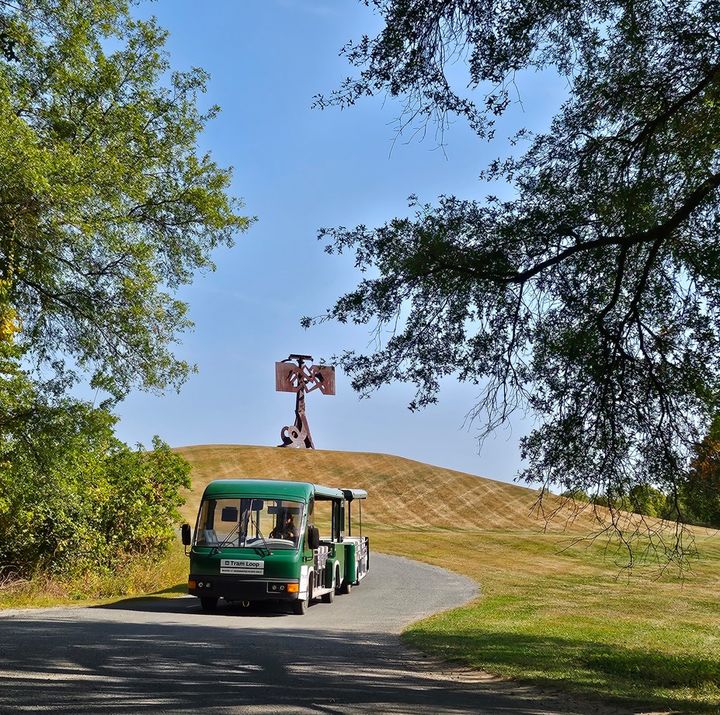
(Photo = Hanbit Lee) Mobility is essential to explore the entire museum, which is approximately 500 acres (600,000 pyeong). *Resale and DB prohibited
who started it
The ‘museum with nature as an exhibition hall’ was created in 1960 by Ralph E. Ogden and Peter Stern. They had a father-in-law-son-in-law relationship and were ‘sincere’ in creating an art museum. Ogden was not a conglomerate who had amassed enormous wealth like the Rockefeller family, Joseph Hirshhorn, and the Whitney family. He was a mid-sized businessman who ran ‘Star Expansion Company’, a bolt and nut manufacturer in Mountainville.
In 1956, he said, “I earned enough money. “Now I want to spend it,” he declared, and decided on art as a place to spend his money. The management of the company was left to his intelligent son-in-law, who graduated from Harvard University and received a master’s degree in law from Yale. Meanwhile, Stern, who worked as a lawyer in Washington DC and dreamed of becoming Secretary of the Treasury, receives a sudden call from his father-in-law and becomes the president of Star Expansion Company within two years. Although he had business talent, Stern always thought, “Business is not my nature,” so it was natural for him to support Ogden in earnest when he started the museum foundation in 1958.
That year, Ogden purchased a Normandy-style mansion from Vermont Hatch, an acquaintance. This mansion, located on a hill overlooking Storm King Mountain, is the beginning of the art museum. Originally, the main collection was made up of works by the Hudson River School (a group of American landscape painters from the mid-19th century), but in 1967, the museum’s identity was expanded with the purchase of 13 works by David Smith, who is considered a master of abstract expressionist sculpture. It has changed. Starting with David Smith’s work in the small garden in front of the museum, we realized that an ‘outdoor exhibition hall’ was enough to create an art museum.
In an interview with Harvard Magazine in the July 1999 issue, Stern explained that it was ‘an inevitable choice.’ “(Storm King, an outdoor art museum) was a matter of vision and opportunity. Land was cheap and large-scale works were just beginning to appear, so it was cheap. The head office (which manufactured bolts and nuts) had an engineer to help with installation and maintenance. “If I had tried to buy a 17th-century Dutch painting or an 18th-century French furniture, I would have been able to purchase at least one piece.” Storm King Art Center is now considered one of the most famous art museums for sculpture in the world.
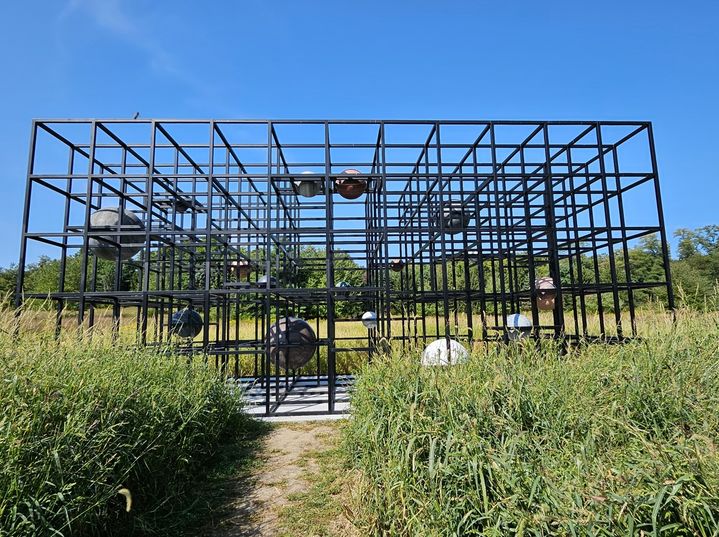
(Photo = Lee Han-bit) Storm King Art Center’s collection continues to evolve. This year, Alija Kwade’s LinienLand was installed. This work, which weighs over 25 tons, is a structure in which a large and heavy sphere floats as if in zero gravity. The artist continues to question the nature of our reality by mixing man-made materials (steel frames) and natural materials (stone). *Resale and DB prohibited
Giants who filled the garden
The art museum started in a small mansion and soon expanded in size by purchasing nearby land. With Stern becoming more involved after Ogden’s death in 1974, Storm King commissioned and collected monumental works by contemporary artists. Robert Grosvenor’s Untitled (1974), Kenneth Snelson’s Free ride home (1975), and Mark di Suvero, which is currently the main character in the museum. )’s steel beam work was also purchased in 1981. Works by Alexander Calder (1982) and Louise Nevelson (1984) were also added. In addition, Alexander Lieberman’s work, which looks like he cut and pasted a steel cylinder, and Isamu Noguchi’s stone sculpture, which is considered one of the first abstract minimalist sculptures, are also major collections.
The museum soon gained notoriety, as Stern described itself as “an international collection with more than 100 artists.” It has become a wannabe art museum for artists as well. Richard Serra’s work, which works with marine cast iron plates up to 30 centimeters thick, also joined Storm King in the 1990s. After careful consideration for a year, Sarah chose a 10-acre site (approximately 12,000 pyeong) and installed four steel plates there. They are scattered here and there on the hill, so you have to come down from the hill and look up from below to see the entire work. Because it is a hill covered with tall grass, only the top of the work is visible in all seasons except winter. Sarah’s work, which shows off its hidden presence, achieves perfect harmony in nature.

(Photo = Hanbit Lee) Maya Lin, Wave Field. 2007-08, Panoramic view of Storm King Art Center. *Resale and DB prohibited
Another large-scale work is Maya Lin’s land art work ‘The Wave Field’ (2007-08). Maya Lin created a undulating green hill on an 11-acre (about 13,000 pyeong) site along New York State Road that was incorporated into the museum. The third work to physically visualize the wave function (‘The wave field’ (1995), University of Michigan, ‘Flutter’ (2005), Miami, Florida) created a ‘natural lawn that is not natural at all’. In this series, the artist observed ocean wave phenomena in satellite ocean photos and transferred them to land. Storm King’s wave field is a total of seven rows of grass waves, each measuring 10 to 15 feet (3 to 4.5 meters) tall. The waves are spaced 40 feet (12 meters) apart, and when viewed from the outside, it looks like just a grassy hill, but when you actually go inside, you feel like you are inside a big wave. It is the largest scale of Maya Lin’s works, produced to the same size as an actual wave.
The main characters of this museum are the works of Marc Di Suvero. It is more than 10 meters high, but it is even more eye-catching because it is located on an open plain that can be seen directly from the main building, which was originally an art museum. The five works stand at a distance, making you feel like the owner of this land and the sentinel protecting it. On the one hand, the work of arranging steel beams is overwhelming, but if you look closely, you can see that the weight and balance between the beams were delicately adjusted.
In addition to large-scale works like this, there are also small treasures throughout the museum. Nam June Paik’s ‘Waiting for a UFO’ (1992) must be found by looking at the map. It is not a remote place, but it is small in size, so it is easy to miss it at a glance. Tired of looking at the empty TV. The fallen Buddha statue brings a light smile. Artist Nam June Paik’s warm wit touches my heart.
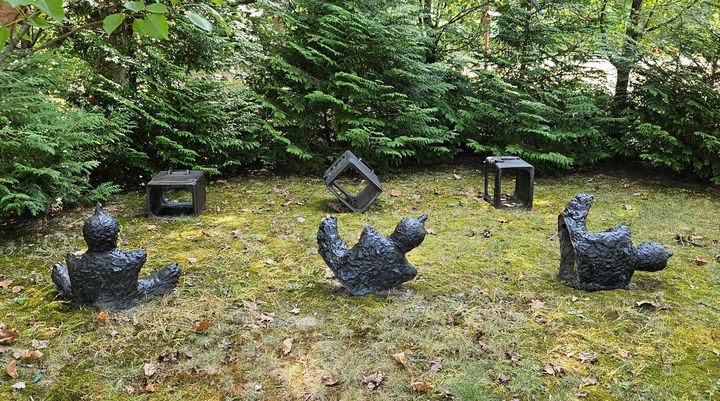
(Photo = Lee Han-bit) Nam June Paik, Waiting for a UFO, 1992. Panoramic view of Storm King Art Center. *Resale and DB prohibited
More alive in nature
At Storm King Art Center, humans (art, a product of them) and nature meet to bring out the sublimity inherent in each to the maximum. Although it is now an unobtrusive plain, part of this garden was also a New York State road. We purchased an area that had been covered with gravel due to construction, created a hill as naturally as possible, and planted meadows and trees. The end that artificiality aims for is to resemble nature. Thanks to this, mothers with children can experience nature and art while pushing strollers. The elderly couple takes a walk holding each other’s hands and enjoys the joy of encountering works of art in unexpected places.
This may be due to the use of such a large area of land, but the gap between the works is quite large. When you get close to a piece of work, you can immerse yourself in it and enjoy it. This is the result of carefully adjusting the field of view with shrubs and grass. Stern emphasized, “A work of art should not be viewed in isolation, but should be viewed in context,” adding, “You should give space to everything, see the relationships between them, and not overdo it.” He was also opposed to the garden being crowded with works of art.
After more than three hours of forced walking and viewing, the tempo of daily life slows down a beat. A bit of looseness seeps in, like the distance between the works. Far away from the hustle and bustle of New York, even time passes differently here. When I get used to the sunlight and the whisper of the wind, reflection on myself and the people around me also begins to arise. Like a holiday suddenly inserted into daily life, Storm King Art Center acts as a ‘break’ for those who visit. Just like good art.
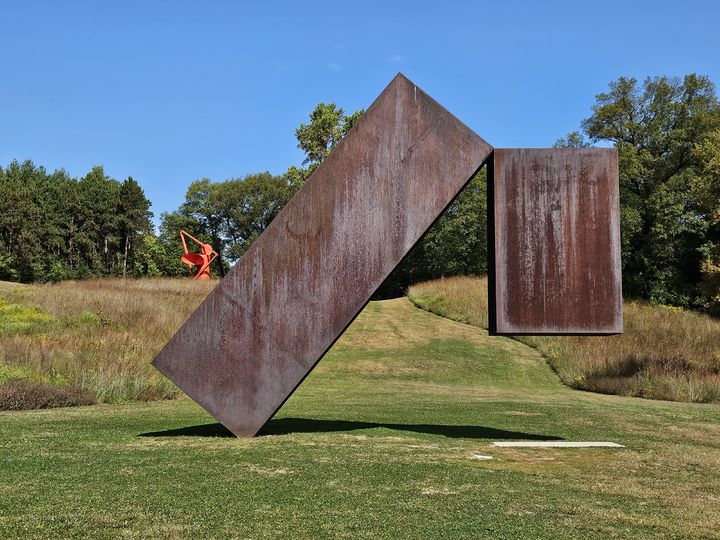
(Photo = Lee Han-bit) Menashe Kadishman, Suspendid, 1944. Panoramic view of Storm King Art Center. *Resale and DB prohibited
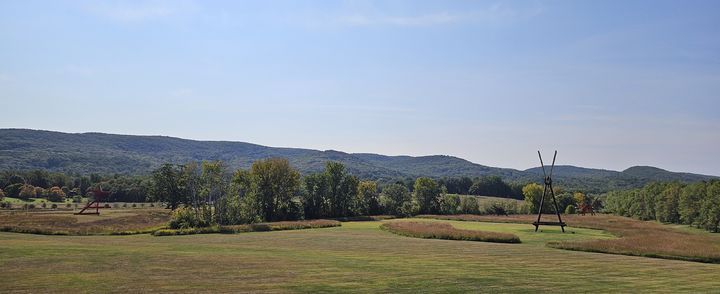
(Photo = Lee Han-bit) Panoramic view of Storm King Art Center. *Resale and DB prohibited
Source: www.newsis.com


